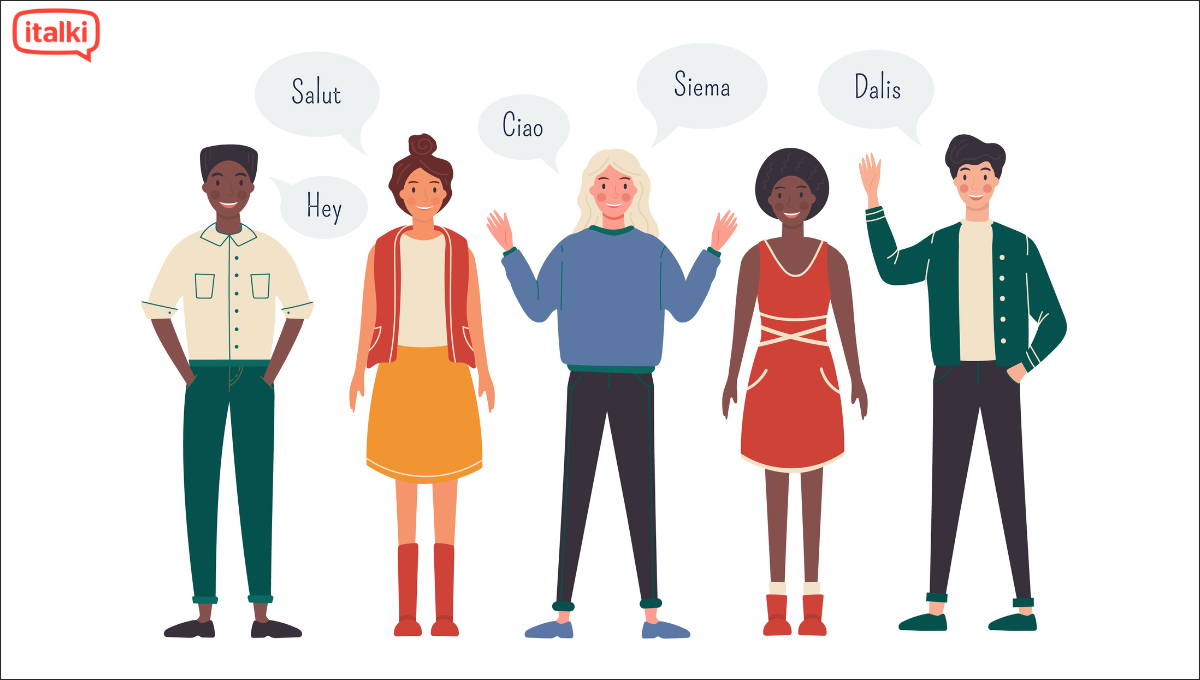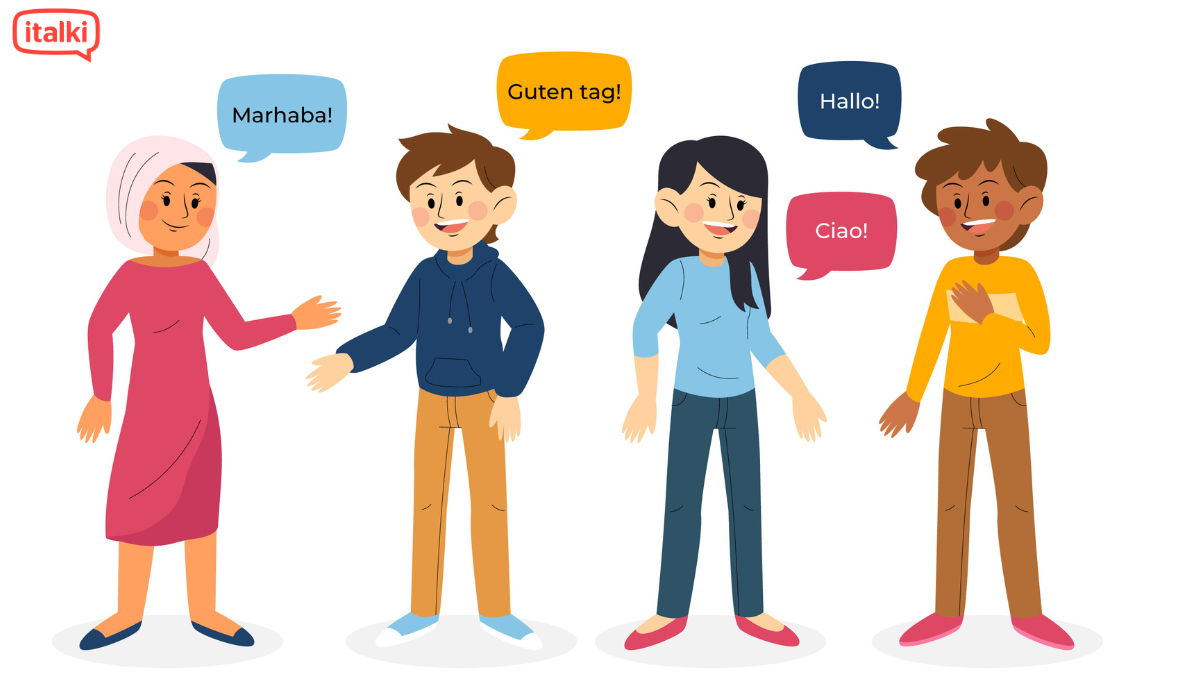Reading and writing the Japanese alphabet known as ‘Kana’ are the real challenges for Japanese learners. Japanese kanji also seems quite confusing and troublesome to a few learners but there are some strategies that can help them to learn and pronounce kanji easily.
First of all, be relaxed and don’t worry about kanji. It is not something you can never learn. In fact, once you start learning the main idea and history of Japanese kanji, you will start learning them easily.
Before getting into Japanese kanji, if you are looking for a good platform to learn Japanese, go and check out italki. With the availability of interesting learning tools and engaging instructional strategies, you can learn and master Japanese and achieve your desired learning goals. Here, the highly experienced Japanese teachers make learning full of fun and pleasure. Book your lessons by visiting the website and let the learning begin!

Find Your Perfect Teacher
At italki, you can find your Japanese tutor from all qualified and experienced teachers. Now experience the excellent language learning journey!
Book a trial lesson
Now moving back to Japanese kanji, first of all, it is essential for you to know what kanji characters are before mastering the Japanese writing system.
What is kanji
Kanji are Japanese characters and one of three Japanese writing systems. The other two are hiragana and katakana, which are referred to collectively as kana. Kana is the Japanese print and cursive alphabets, a phonetic syllabary system. Kanji are Japanese characters that represent entire words.
Kanji symbols can stand alone or be combined with other kanji or kana to form new words, ideas, or verbs. The difficult part is that their pronunciation and readings differ depending on which other kanji or kana they are connected with. Even if you don’t know how to pronounce the kanji, you can understand the sentence if you recognize its word meaning.
For instance, the Japanese kanji 水. This kanji’s English meaning is “water.” Its Japanese pronunciation is most often みず (mizu) orすい (sui). When 水 combines with 着 (the kanji for “to wear” or “clothing”), it becomes 水着 (mizugi) which means “swimsuit.” Basically, “water clothes.” But in the word 水曜日 (which means “Wednesday”), we use its other reading, sui and it becomes suiyoubi.
A brief history of kanji
If you want to learn kanji, then understating its brief history can help you get in the right direction. Kanji is a Chinese character that was introduced into Japanese around the 5th century.

According to Japanese history, Wani, a Korean scholar, introduced both Confucianism and kanji to Japan. Prior to that, Japan lacked its own writing system. As a result, they adopted kanji.
However, the kanji did not correspond to the already-established Japanese grammar. To adapt kanji to the Japanese language, a new writing system was developed, which eventually became hiragana.
Interesting fact: Despite the fact that women were traditionally not educated, women contributed significantly to the Japanese writing system. Murasaki Shikibu, a Heian-era poet who wrote “The Tale of Genji,” contributed to the system’s evolution.
Kanji as pictorial representations
It is a common misconception that Japanese kanji are pictorial representations, which means they resemble the words they represent. While this is true for some kanji, it is not true for the entire writing system.
Why do you need to learn Japanese kanji
Three writing systems may appear strange and overly complex. Someday, the Japanese may simplify their language and eliminate kanji, as Koreans and other Asian languages have done. But that is not the case right now, and Japan requires them.
Kanji can be used to break up a sentence. It is nearly impossible to understand the meaning of a sentence without them. In Japanese, there are no spaces to indicate where a word begins and ends. Kana are jumbled together in one long string of symbols as a result of this. It is difficult unless you are fluent in Japanese.
Let’s have a look at an example:
Take a look at this example:
- 来週の土曜日には友達に会うつもりです。
- らいしゅうのどようびにはともだちにあうつもりです。
Both of those sentences mean exactly the same thing and are pronounced exactly the same way. But one has kanji and one is only written in kana. They both mean “I will meet my friend next Saturday.” But it’s a lot easier to read when you know this:
来週 (next week) の 土曜日 (Saturday) には 友達 (friend) に 会う (meet) つもりです。
Kana are extra bits of information that are part of basic grammar. But without the kanji, it would be a jumble and difficult to understand what it meant. You could read and understand that sentence even if you only knew the English word meanings for those kanji.
Apart from this, many words are pronounced the same but have different kanji. The word “kanji” itself could mean “Chinese characters” or “feeling/emotion.” It all depends on which Japanese characters you use: 漢字 or 感じ.
Number of Japanese kanji
Because kanji has evolved so much over the millennia, there are tens of thousands of them. The Japanese Ministry of Education considers 2,136 kanji to be “essential.” These kanji are known as jouyou kanji.

While there are more, particularly in scholarly or news articles, this is the starting point for education and literacy in Japan. But don’t let that scare you! There are solutions, and they are simpler than you think.
How to read and translate Japanese kanji
In order to read and translate Japanese kanji, you can use different Japanese translating apps. You can simply search for an English word, input the kanji to learn its reading, and look up words that are similar. If you are struggling with the reasons to learn Japanese, the translation apps can give you a kickstart.
What are kanji radicals
Radicals are fundamental kanji symbols. They aid in the formation of larger, more complex kanji. They are useful for learning how to break down kanji for writing, as well as remembering how to pronounce kanji and decipher their meaning. Many kanji have the same or similar pronunciation because they share the same radicals.
These radicals influence Japanese characters and meanings. For example, some of the most common Japanese kanji are also radicals in larger kanji. Take the kanji 土 (tsuchi or do). Its English translation is “soil” or “earth.” So, any time we see this as part of another kanji, we know the meaning probably has something to do with dirt, land, or nature. In the word 地域 (chiiki), it appears in both kanji, and means “area” or “territory.” Another (unfortunately) common one is 地震 (jishin) or “earthquake.”
How to learn kanji easily
A good way to start learning kanji is to look at a list of the most important kanji and radicals in Japanese. When starting with kanji, first focus on the kanji meaning rather than the reading. So, memorize that 水 means “water” rather than “water, mizu, sui.” If you try to remember the English meaning as well as all the different readings, you will become confused and overwhelmed.
You should learn the English meaning of the kanji first because you can quickly learn the most common readings once you start learning vocabulary. You’ll see the kanji in context with words you’re already learning. So memorizing the kanji reading with a vocab word together is faster. Knowing what the kanji means will assist you in remembering the entire word.
Practicing on paper will also help you to improve your skills. You should learn proper stroke order. That is, you must learn the proper direction and order of the strokes that comprise the kanji. Japanese is written from left to right, top to bottom. Some kanji are nearly identical except for their stroke order, so how you write them matters.
Frequently asked questions
Q. What are the rules of kanji?
A. The basic rule of kanji stroke order is “go from top to bottom and left to right”. In 三, each stroke is written from left to right, starting with the uppermost stroke. In 川, each stroke is written top to bottom, with the left strokes written before the right strokes.
Q. What are the 2 types of reading kanji?
A. Both onyomi and kunyomi refer to a way of reading a particular kanji. Put simply, the onyomi is a pronunciation derived from Chinese (where kanji originated), while kunyomi is the Japanese pronunciation of a kanji.
Q. What is the oldest kanji?
A. The oldest written kanji in Japan discovered so far were written in ink on wood as a wooden strip dated to the 7th century, a record of trading for cloth and salt. The Japanese language had no written form at the time Chinese characters were introduced, and texts were written and read only in Chinese.
Conclusion
Learning Japanese kanji may seem overwhelming at first, but with steady practice and consistency it becomes manageable. By following the tips to learn Japanese for beginners, kanji will soon start to feel less intimidating and more rewarding.
If you want tailored support, working with a private Japanese tutor can give you step-by-step guidance on stroke order, readings, and practical usage so you build confidence faster.
Want to learn a language at italki?
Here are the best resources for you!















